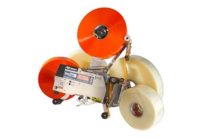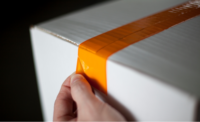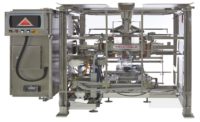Peelable sealing improves with ultrasonics




Usually, snack packages are sealed with traditional heat sealing systems that result in peelable seals – with a common width of 15 to 24mm. The width is necessary to guarantee seal tightness and to create the opening characteristics of a peelable seal. Traditional heat seal systems are cost-effective and very common. However, extensive control samples in the Herrmann Ultrasonics (www.herrmannultrasonics.com) laboratory showed that approximately 40% of heat seals in the market are not peelable or tight. Seals created with Herrmann Ultrasonics sealing systems are tight and peelable, but the previous tool design was too narrow to offer the chips consumer the familiar peelable opening characteristics.
Sophisticated new anvil contour
The goal of Herrmann Ultrasonics was to develop a new anvil contour for a tight yet peelable ultrasonic seal, which is similar to a heat seal with respect to characteristics and visual appearance. In the ultrasonic sealing process, the packaging materials to be joined are placed between the sonotrode and the anvil. In order to focus the ultrasonic energy, small bundled contours (top, radius or plateaus which are arranged as vertical lines) in the anvil are necessary. The seal quality depends on the line height, distance, quantity and design of this contoured anvil. Therefore, the following criteria were determined in the lab, based on a DOE process:
- Seal width
- Distance between the sealing lines
- Selection of the contour (plateau, radius or top)
- Sealing force
The correct sealing force insures an even distribution of the created flow of the seal layer, with few wrinkles, which therefore provides for an even distribution of force across the length of the seal. This is critical for the peel ability of the seal.
Ideal Peel characteristics
It is easy to peel a seal if it has a cohesion fracture (separation of the seal layers of the films) resistance of 4 to 6 N/15mm over the length of the seal. It is difficult to peel seals that have an adhesive fracture resistance in the area of the seal (delamination). The chart below shows an ideal force path during a tensile test: an even increase, when an individual seal line opens, with a subsequent rapid decrease once that particular seal line is fully separated. The ‘force peaks’ are comparatively equal to each other in this multiple line seal:
The tightness of the seal was verified using the liquid Rhodamin (red dye in pure alcohol). A seal is proven tight if no dye can be seen on the other side of the bag. Also, it was verified that dye was not present between the multiple seal lines after the dye dried or the alcohol was vaporized.
Conclusion:
- It is possible to create tight yet peelable cross seals.
- Ultrasonic seals of metallic foils are peelable starting at widths of 7mm. Therefore, it is possible to reduce the overall amount of the packaging material. Heat seals typically have a seal width of 15 to 24mm. The percentage of the area of a typical heat seal is approximately 8% to 12% of the package. This can be reduced by 50% when sealing with ultrasonics.
- The overlap longitudinal seal (back seal) can also be sealed with ultrasonics, offering a similar tight seal.
- The ultrasonic tooling remains cool, which eliminates shrinking and visual changes to the foil structure.
Looking for a reprint of this article?
From high-res PDFs to custom plaques, order your copy today!









